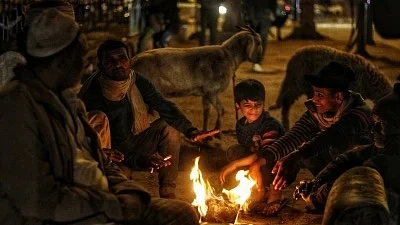North and North-East India have a warmer than usual winter awaiting them during the period of December-February according to the predictions released by the Indian Meteorological Department (IMD).
Meanwhile in an odd switch, South and Central India can expect a surprising temperature drop this season.
Experts believe that this unprecedented change in winter temperatures is largely due to the effects of La Nina-- an atmospheric phenomenon. This will lead to drier winters over the northern states, whereas the south will experience regular rainfall.
What Does a Warmer Winter Mean for Indian States?
The biggest impact of the warmer temperature will probably been seen mountainous regions, such as Jammu and Kashmir, Himachal Pradesh, Arunachal Pradesh and Uttarakhand. The higher temperatures are likely to lead to glacier melting.
On the other hand, in the plains, Rajasthan, Haryana and Punjab are expected to see a 75% chance of above usual maximum temperatures, which would make warmer days prevalent over a much larger area.
This is in stark contrast to South Indian states which are expected to see colder days and nights.
La Nina Triple Dip Affects Indian Winters
The warmer winters in North India and colder winters in South India is an odd switch, considering the northern regions of the country are known for especially frigid temperatures during winter months.
December brings another bout of La Nina conditions as indicated by surface temperatures over the pacific ocean, and this marks the third consecutive winter experiencing La Nina, making it a rare triple dip event.
But what is La Nina?
La Nina is an atmospheric and oceanic phenomenon that takes place over the pacific ocean. During La Nina, the surface temperatures across the eastern equatorial and central pacific ocean are much lower.
The La Nina conditions usually bring a colder and wetter-than-normal winter. However, this year that won't be the case with a colder-than-normal winter for the south and a warmer-than-normal for northwest and northeast India.
The La Nina conditions are expected to prevail through the ongoing winter season and may even last till March 2023.
This winter however, is expected to be much drier according the IMD reports that state rainfall over most of the country is predicted to be below average, excepting parts of South India.
La Nina conditions are expected to taper down towards the end leading to 2023 spring and summer periods facing no impact from global atmospheric phenomenon leading to a period where there is no effect of either La Nina or El Nino-- warmer atmospheric conditions, according to the National Oceanic and Atmospheric Administration (NOAA).
(Our on-ground climate journalism needs your insights, ideas, and financial support - as we cover the biggest crisis of our times. Become a Q-Insider so we can bring more such stories to light.)
